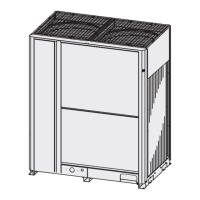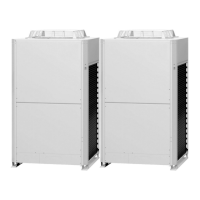Operating Instructions
Air Conditioner
Model No.
Indoor Units
4-Way Cassette
60x60 (Y2 type)
S-22MY2E5
S-28MY2E5
S-36MY2E5
S-45MY2E5
S-56MY2E5
Outdoor Units
mini
(LE1 type)
U-4LE1E5
U-5LE1E5
U-6LE1E5
U-4LE1E8
U-5LE1E8
U-6LE1E8
2WAY
(ME1 type)
U-8ME1E81
U-10ME1E81
U-12ME1E81
U-14ME1E81
U-16ME1E81
U-18ME1E81
U-20ME1E81
3WAY
(MF1 type)
U-8MF1E8
U-10MF1E8
U-12MF1E8
U-14MF1E8
U-16MF1E8
(MF2 type)
U-8MF2E8
U-10MF2E8
U-12MF2E8
U-14MF2E8
U-16MF2E8
Indoor Units
Wall Mounted
(K2 type)
S-22MK2E5
S-28MK2E5
S-36MK2E5
ENGLISH
FRANÇAIS
ESPAÑOL
DEUTSCH
ITALIANO
NEDERLANDS
PORTUGUÊS
EΛΛΗΝΙΚΆ
БЪЛГАРСКИ
РУССКИЙ
УКРАЇНСЬКА
2 ~ 15
16 ~ 29
30 ~ 43
44 ~ 57
58 ~ 71
72 ~ 85
86 ~ 99
100 ~ 113
114 ~ 127
128 ~ 141
142 ~ 156
Before operating the unit, read these operating instructions thoroughly and keep them for future reference.
B.INDONESIA 158 ~ 171
Avant d’utiliser l’appareil, lisez ce mode d’emploi dans son intégralité et conservez-le pour toute référence ultérieure.
Bevor Sie das Gerät in Betrieb nehmen, lesen Sie bitte diese Bedienungsanleitung aufmerksam
durch und bewahren Sie sie für die künftige Verwendung auf.
Prima di utilizzare l’unità, leggere a fondo queste istruzioni per l’uso e conservarle come riferimento futuro.
Преди да започнете експлоатация на този уред, прочетете внимателно тези инструкции и ги
запазете, за да можете да правите справки с тях и в бъдеще.
Lees deze gebruiksinstructies goed door voor u het apparaat gebruikt en bewaar ze voor toekomstig gebruik.
Antes de utilizar o aparelho, leia completamente este manual de instruções e guarde-o para futuras referências.
Перед использованием этого устройства внимательно прочитайте настоящую инструкцию по
эксплуатации и сохраните ее для дальнейших справок.
Уважно прочитайте цю інструкцію з експлуатації перед тим, як увімкнути пристрій, та
збережіть її на майбутнє.
Πριν θέσετε τη μονάδα σε λειτουργία, διαβάστε πολύ καλά αυτές τις οδηγίες χρήσης και
διατηρήστε τις για μελλοντική αναφορά
.
Antes de operar la unidad, lea atentamente estas instrucciones de funcionamiento y guárdelas para futuras consultas.
F569003
Sebelum mengoperasikan unit, baca petunjuk pengoperasian ini secara menyeluruh dan simpan untuk referensi
mendatang.
Panasonic Corporation
1006 Kadoma, Kadoma City, Osaka, Japan
* Shows K2 type (Wall Mounted)





